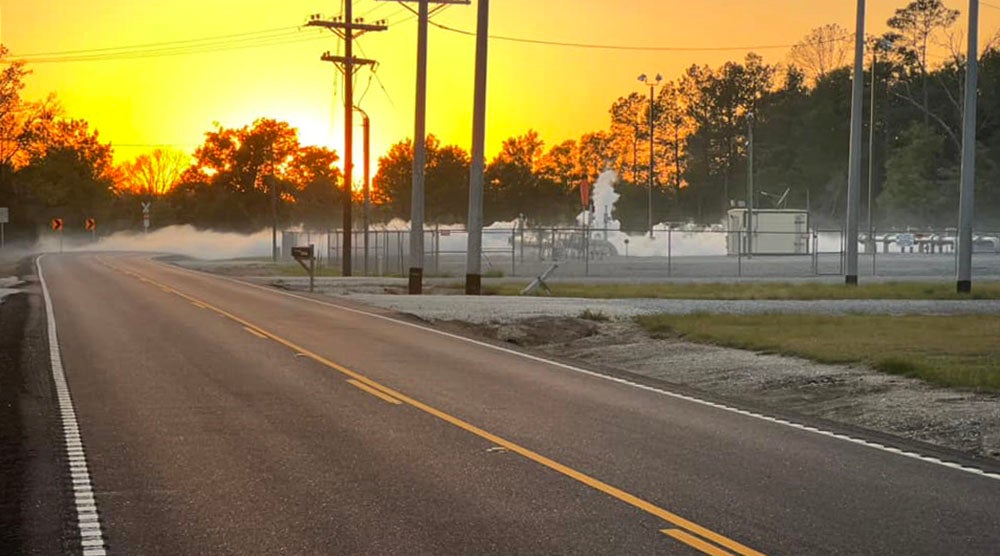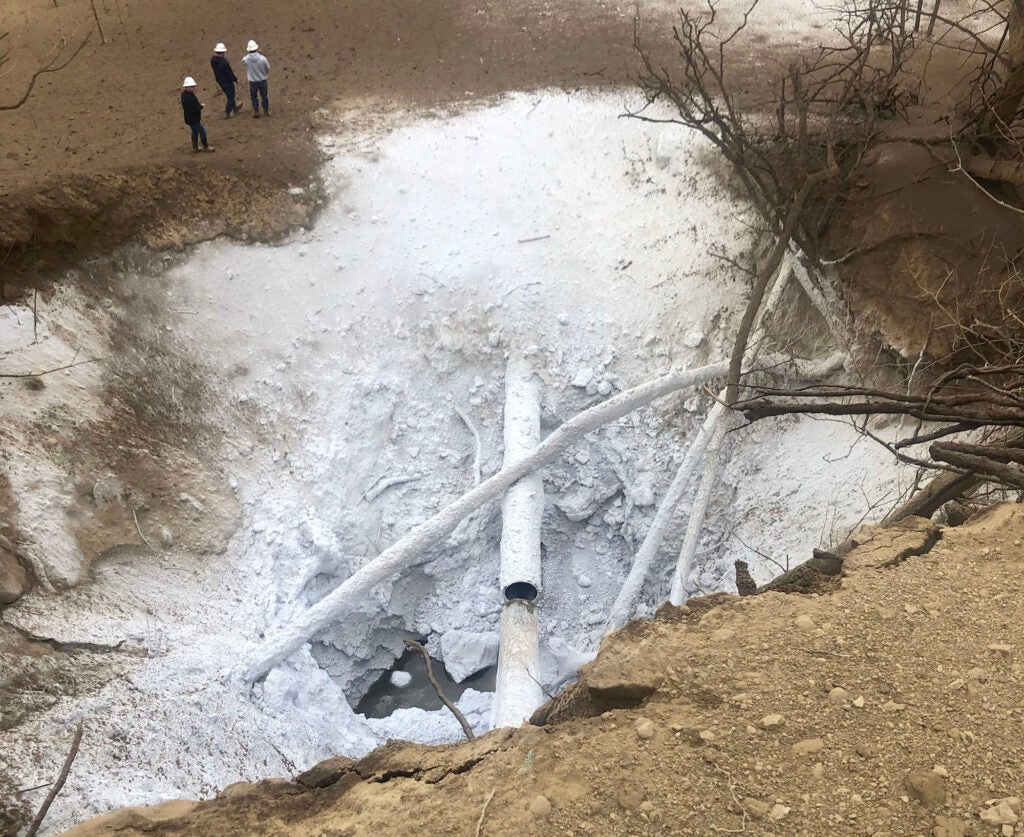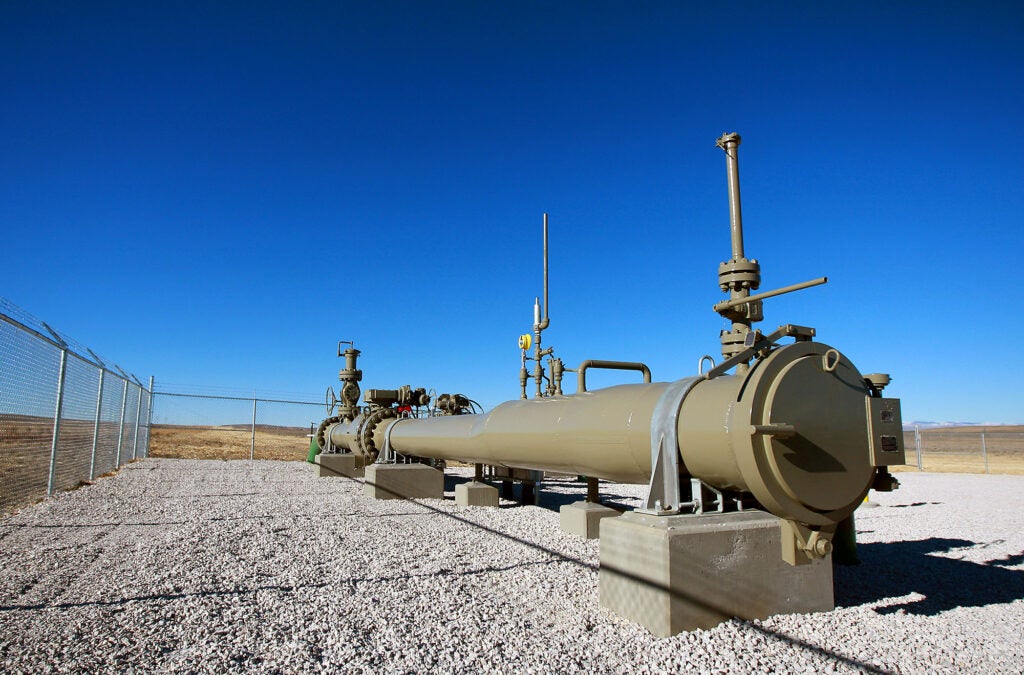A Leaking CO2 Pipeline Can Cause Suffocation Within a Minute. The Government Needs to Regulate Them, Fast
Industries are planning a massive buildout of CO2 pipelines. Here’s what to know about the health risks, and how we’re asking the government to protect communities from a lethal pipeline rupture.

This page was published a year ago. Find the latest on Earthjustice’s work.
In February 2020, residents of a small town in Mississippi began experiencing unexplained sickness. Dozens of people were rushed to the local hospital, some of whom had passed out while driving their cars.
The culprit wasn’t a virus, but an asphyxiant. A pipeline carrying carbon dioxide, or CO2, had ruptured, leaking the odorless gas into the town of Satartia. In large quantities, CO2 causes suffocation by reducing oxygen in the air; as it accumulated in Satartia, children passed out while playing outside, and others experienced seizures.
The ruptured pipe is part of a network of over 5,000 miles of CO2 pipelines in the United States, primarily transporting captured carbon from polluting facilities to depleted oil and gas wells where it gets pumped underground to recover more fossil fuels. Although small compared to the vast network of oil and gas pipelines, that number is set to significantly increase as fossil fuel companies plan a massive buildout of carbon capture and storage (CCS) facilities subsidized by newly available government funds. These facilities will require a buildout of new CO2 pipelines, mostly throughout the Midwest and Gulf Coast regions.
But CO2 pipelines are dangerously under-regulated and, as the Satartia leak showed, they pose extreme safety hazards to communities and the environment.
Why are CO2 pipelines dangerous?
The unique physical properties of CO2 create a higher likelihood of a pipeline opening up like a zipper when a rupture occurs, releasing large amounts of the gas and hurling shards of metal.
That’s because the CO2 that’s transported through pipelines is often in a highly pressurized liquid form. When it reacts with water or other contaminants, it turns into carbonic acid, which will eat through a steel pipeline. Impurities like water or other gases in the CO2 or the pipeline itself can cause such a reaction, leading to a potentially violent pipeline rupture.
The government largely relies on pipeline companies to implement safety measures, which can have dire consequences: after the Satartia incident, federal investigators found that rain in the preceding months had caused the soil under the pipeline to shift, causing a section of pipe to break and expose the CO2.
And it’s not just these worst-case scenarios that impact communities. The same pipeline company responsible for the rupture in Satartia had another of its CO2 pipelines leak in Sulpher, Louisiana in 2024. The leak was much smaller, but these repeated incidents could be avoided with stricter government regulation and oversight.

A CO2 pipeline rupture in Yazoo County Mississippi in February 2020. (Yazoo County Emergency Management Agency)
What are the public health risks of CO2 leaks?
The rapid danger of CO2 inhalation after a rupture makes early detection and public warning critical.
When CO2 leaks, it vaporizes into a gas that is heavier than air, sinking low to the ground. In low-lying areas or valleys, pockets of accumulated CO2 can quickly reach deadly levels, causing animals and people to become unconscious within a minute. Health effects of CO2 poisoning include headaches, nausea, convulsions, cardiac arrest, and death.
To make matters worse, CO2 can cause vehicles to stop working by impairing combustion engines, which need oxygen to function. When the CO2 pipeline leaked in Satartia, this prevented emergency responders from reaching people in distress. At least 45 people were hospitalized, and some residents continued to suffer from respiratory issues in the aftermath.
CO2 pipeline ruptures can impact areas measured in miles, not feet. But regulators have not determined what is a safe distance from a pipeline in case of rupture. As a result, thousands of communities may be living in potential impact zones for CO2 pipeline projects and don’t even know it. A recent study found that CO2 pipelines may be more susceptible to small ruptures than oil and gas pipelines, meaning CO2 could leak for longer periods without being detected.
There are also the climate risks: Because a majority of the captured carbon is currently used to recover more oil, a massive carbon capture buildout would perpetuate fossil fuel pollution that is harming communities and driving the climate crisis.

A hub of a carbon dioxide pipeline just east of Powder River in Natrona County, Wyoming. The 232-mile pipeline will carry carbon dioxide to oil fields in Wyoming and Montana for use in extracting oil. (Alan Rogers / Star-Tribune via AP)
How can CO2 pipelines be safer?
Before polluting industries race to build more CO2 pipelines, the government must assure the safety of those who live near them.
Existing federal regulations do not guarantee the safe transportation of CO2 through pipelines, so we’re calling on the U.S. Department of Transportation and its pipeline safety agency Pipeline and Hazardous Materials Safety Administration (PHMSA) to update its regulations of CO2 pipelines as quickly as possible. Here’s what we’re asking for:
- The Biden administration must ensure the safety of communities and recognize the immediate need for comprehensive regulation of CO2 pipelines. We urge the administration to publish its proposed rule this fall.
- PHMSA must update existing regulations to cover pipeline transportation of CO2 in all its forms (gas and liquid) that consider the unique properties of CO2.
- PHMSA needs to identify the potential impact areas for CO2 pipeline ruptures and incorporate protections into pipeline safety regulations.
Earthjustice’s Clean Energy Program uses the power of the law and the strength of partnership to accelerate the transition to 100% clean energy.